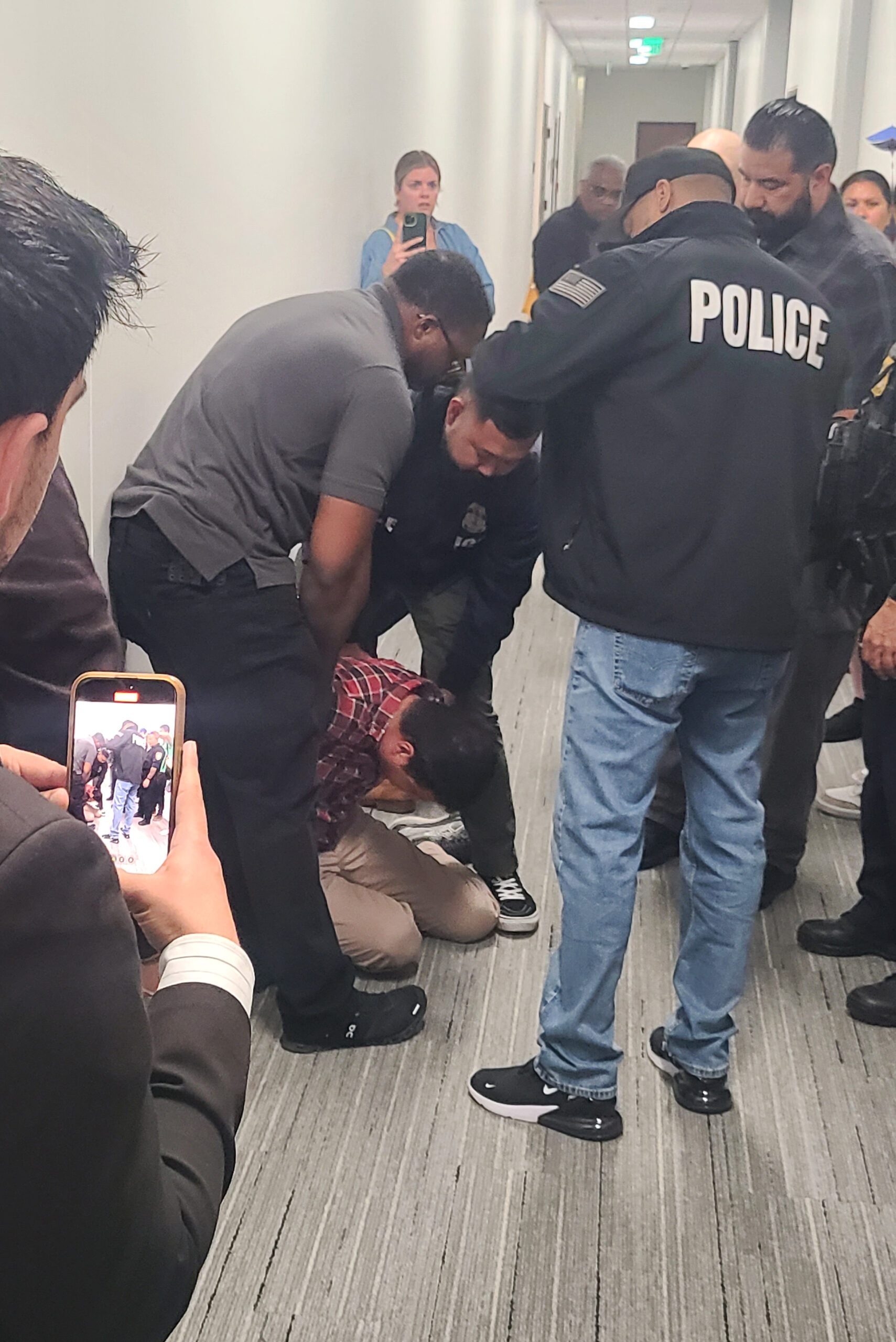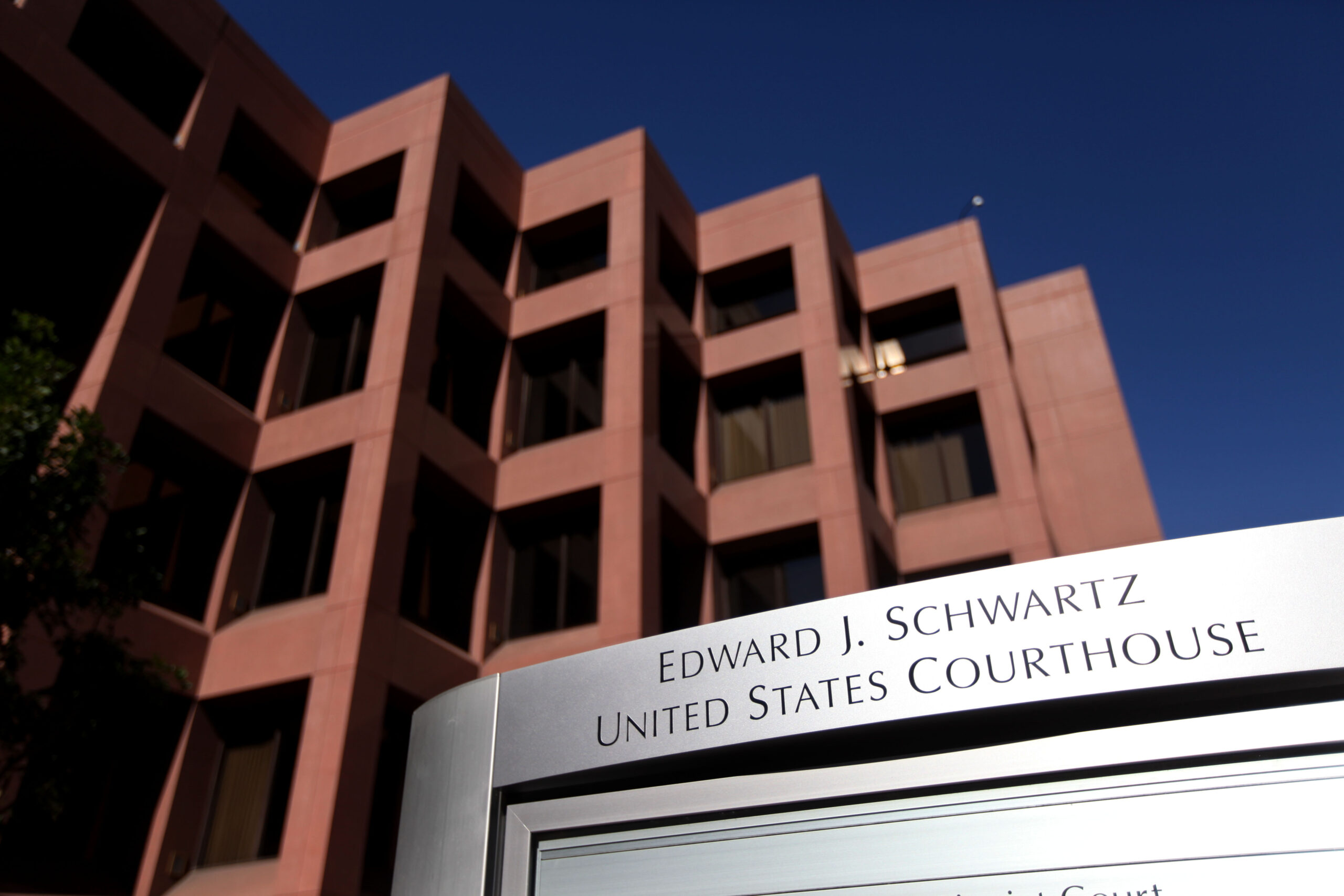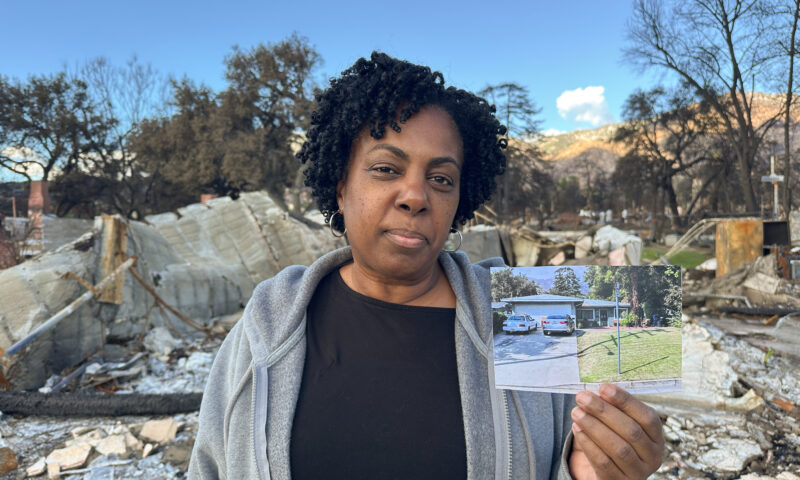Beyond the Border brings you human stories about the U.S. immigration system through original reporting from journalist Kate Morrissey and curated highlights from reporters across the country. The newsletter is supported by Capital & Main.
Immigration and Customs Enforcement officers arrested 11 people after their court hearings at the San Diego Immigration Court on Thursday as part of a nationwide operation launched this week to try to fast track deportations.
Beginning Tuesday in courts including those in Santa Ana and Las Vegas, attorneys representing the U.S. government — who are also employed by ICE — requested that immigration judges close cases of some people who had been in the U.S. for less than two years and who had shown up without attorneys. Normally a closed immigration court case would mean that the government is no longer trying to deport someone. But instead, ICE officers waited outside courtrooms to arrest those people and put them into expedited proceedings that do not require a judge.
“Going to immigration court is your chance to be heard,” said Michelle Celleri, an attorney and legal rights director of Alliance San Diego. “It is your right. It is part of due process.”
Celleri said that arresting people who show up for their hearings would discourage others from coming to immigration courts.
ICE and the Executive Office for Immigration Review, which runs the immigration court, did not respond to requests for comment from Beyond the Border. ICE has told other news outlets that it is detaining people who are subject to a fast-track deportation authority.
That fast-track deportation process is called expedited removal.
In expedited removal, an immigration officer, rather than a judge, gives the deportation order. In an executive order issued in January, President Donald Trump called for officers to use the process on anyone who has been in the U.S. for less than two years.
“With expedited removal, they can deport them tonight,” said Ginger Jacobs, a private immigration attorney in San Diego. “They’re short-cutting the due process these folks came here to receive in immigration court.”
But not everyone detained in San Diego on Thursday had closed cases. ICE arrested several people who had received future hearings dates from the immigration judges they appeared before, according to their attorneys and friends.
Ruth, a volunteer with the grassroots group Detention Resistance who asked not to be fully identified because of concerns about potential retaliation, said she had accompanied her friend, a man from Colombia who has been in the U.S. for just under a year, to court Thursday morning.
She said that when her friend left the courtroom to go to the bathroom, officers tried to detain him even though his hearing hadn’t happened yet. During his hearing, Ruth’s friend told the judge that he was afraid of being arrested when he went back outside the courtroom.
The judge told her friend that he wasn’t affiliated with ICE and couldn’t control what they did, Ruth said. Her friend turned in his asylum application, and the judge gave him another hearing date.
When her friend left his hearing, ICE officers took him into custody.
“He came in good faith keeping with his asylum process,” Ruth said. “Now we don’t even know what’s going to happen to him.”
Ruth said her friend has been active in the San Diego community and getting involved as a volunteer to help others in need.
Tracy Crowley, an immigration attorney with Immigrant Defenders Law Center, took on Ruth’s friend’s case as he was being detained. She said she was still trying to figure out the legal reason for taking him into custody.
“It’s wild,” Crowley said. “The warrants are very bareboned and don’t include the legal basis for detaining them.”
Crowley was among a group of lawyers who jumped in to try to represent people in their court proceedings throughout the day in an effort to avoid additional arrests.
Jacobs, the private immigration attorney, said her office took on four cases Thursday, including that of a young woman from Turkey who seemed terrified by the officers’ presence.
In the afternoon, Jacobs helped a mother and her teenage son, quickly getting to know them in the courtroom in the moments before the hearing began. Outside in the hallway, more than 10 officers waited. ICE also called in two private security guards and two Federal Protective Services officers because of the presence of journalists, attorneys and community members documenting their actions in the hallway.
After the family left the courtroom, ICE appeared to follow them to try to detain them. Jacobs followed after the officers, and she said that ICE decided to let the family go.
Jacobs said ICE let the family go because the son had accompanied his mother.
ICE officers in San Diego mistakenly attempted to arrest two additional people Thursday. The officers later acknowledged the error.
In one case, an attorney from the American Bar Association Immigration Justice Project accompanied his client out of the courtroom. When ICE moved to arrest the client, the attorney objected, asking to see a warrant.
Officers shoved themselves between the attorney and his client. Two officers took hold of the man and he ended up on the ground. Beyond the Border witnessed him begin to gasp for air and hyperventilate. The attorney asked to be allowed to help his client, but ICE officers kept him away.

A man kneels in the hallway outside immigration court after being detained by ICE on Thursday. Photo: Kate Morrissey.
“May I please see a warrant because the warrant you provided is not that person,” the attorney said after ICE showed him their documentation. “You are making an unlawful arrest.”
ICE continued to keep him away from his client, saying that the man was having a medical emergency.
“He’s having a medical emergency thanks to you,” the attorney replied.
Another attorney in the hallway called for an ambulance, and eventually ICE backed away from the man. The attorney helped his client down the hallway to the elevator, holding the man’s arm over his shoulders to support his weight so that he could move away from the officers.
“I will help my client at this point,” the attorney said as they left. “You guys have done enough.”
Several people who had accompanied family members to their hearings were left in the hallway in tears as they watched loved ones being taken away. Celleri worried about family members who weren’t there and would have no way of knowing what had happened.
“For those who are unrepresented, to their family they have just disappeared, and they are not going to know where they are for 48 hours — and that’s if they know how to find them,” Celleri said.
Officers told attorneys in the hallway that those arrested on Thursday would be taken to Otay Mesa Detention Center in San Diego.
Lindsay Toczylowski, an attorney and CEO of Immigrant Defenders Law Center who was among the first to publicly call attention to the ICE operation, called the arrests a bait and switch.
“By detaining people in courtrooms, we are discouraging people from doing what we have always asked them to do,” Toczylowski said. “We have always stressed how important it is for people to show up to court, to avail themselves of the system to follow the rules that are set out.”
She said courts in Santa Ana, Chicago, Phoenix and Miami also saw arrests this week.
Celleri said people with upcoming hearings should know that if they don’t come to court, they will likely be ordered deported in their absence.
She said that if ICE attempts to arrest someone, that person should make sure the officers have the correct name and that if that person has already paid bond to get out of immigration custody, the person should not be detained again.
You can get the latest immigration news in your inbox by subscribing to Beyond the Border.


 Pain & ProfitNovember 3, 2025
Pain & ProfitNovember 3, 2025
 Column - State of InequalityNovember 6, 2025
Column - State of InequalityNovember 6, 2025
 Latest NewsOctober 29, 2025
Latest NewsOctober 29, 2025
 Latest NewsOctober 31, 2025
Latest NewsOctober 31, 2025
 The SlickNovember 5, 2025
The SlickNovember 5, 2025
 Latest NewsOctober 31, 2025
Latest NewsOctober 31, 2025
 Column - State of InequalityOctober 30, 2025
Column - State of InequalityOctober 30, 2025
 StrandedNovember 7, 2025
StrandedNovember 7, 2025


